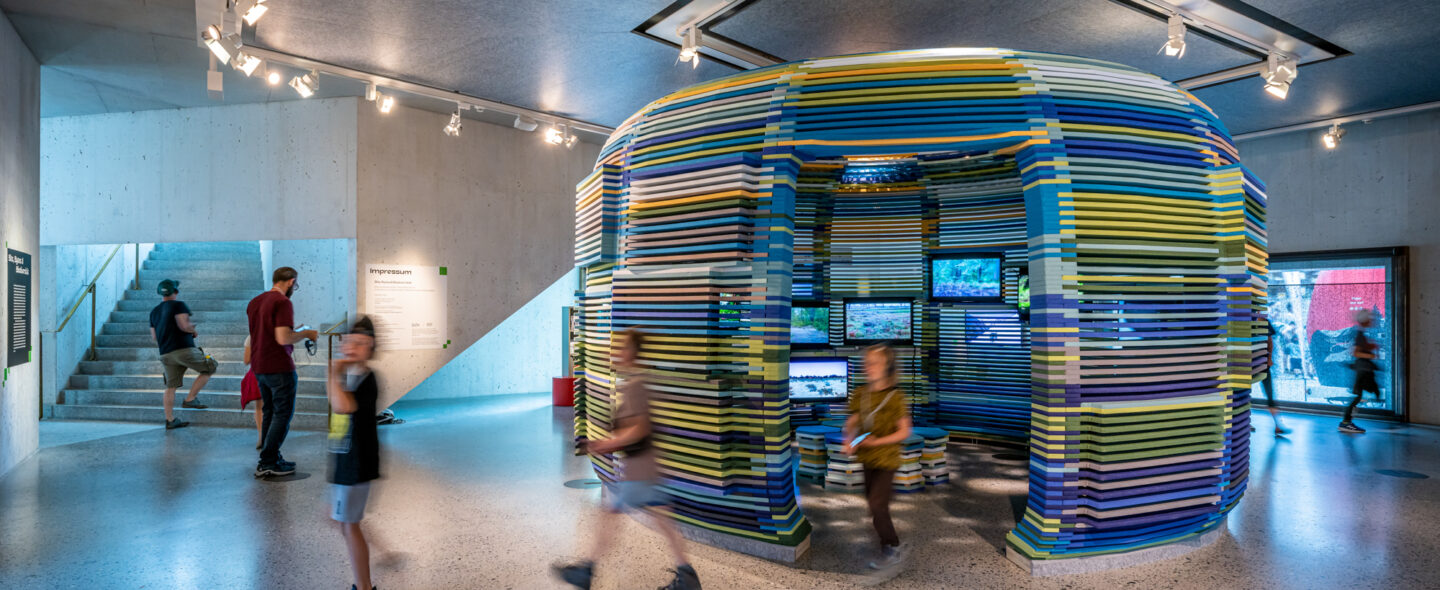
About

Head of Art x Science at the University of Zurich
Dr. Katharina Weikl works at the intersection of art, science and society and holds a Ph.D. in the history of science from the HU Berlin. She is the head of Art x Science Office at the University of Zurich, where she works with scientists from all disciplines and creates collaborations with a wide range of artistic fields. She is mostly engaged in the field of ecology - a central research area in which University of Zurich is currently ranked 5th in the world by Shanghai Ranking. Notable exhibitions she has curated in Switzerland include "Planet Digital" at the Museum für Gestaltung, "100 Ways of Thinking" at Kunsthalle Zürich, and "Transactions" at Manifesta 11 in 2016. Internationally, her work is shown at the Mun Gallery at the DDP in Seoul, South Korea, as well as the Science Gallery, Bengaluru, India.
1. “Mirror of Nature”, as a continued story of “Triggered by Motion” in China, tries to tell the scientific stories of biodiversity through an immersive installation. How do you see this intersection of art and science?
This loss of biodiversity is a major global challenge and a key area of research at the University of Zurich, currently ranked 5th in the world in the field of ecology by the Shanghai Ranking. In light of this, we aim to communicate current research projects by wildlife ecologists to the general public and to promote a global dialogue through projects such as “Triggered by Motion”.
The “Mirror of Nature” program will continue the scientific narratives here in China and we hope to foster more meaningful exchanges on the topic.
2. With the exhibition’s arrival in Shanghai, what is the underlying concept behind it, and how does it differentiate itself from previous iterations?
Starting from 2023, the exhibition has been displayed in Switzerland and, in partnership with the Swissnex network, at different venues worldwide. Currently, for the Shanghai exhibition, I am collaborating with Cissy Sun from Swissnex in China and our Chinese curator, Han Bo, who is a poet and artist from China.
This immersive installation will be a collaborative effort between wildlife researchers and biologists from the University of Zurich and around the world, in conjunction with a group of Chinese and European artists.
Together, we also came up with a Chinese name for the exhibition – “万物之镜”, inspired by the Daoist Philosopher Chuang-Tzu, reminding us to take a cross-disciplinary approach towards exploring biodiversity and respect nature as it is.
3. As the exhibition debuts in Shanghai for the first time, what is there to expect?
With synchronized videos collected from camera trap footage from 21 conservation projects worldwide, the walk-in pavilion reveals the global rhythms that alternate between day, night, and the changing seasons. It will allow visitors to immerse themselves in the natural habitats of wildlife and experience local biodiversity while taking a year-long journey around the planet. There will also be a selection of artworks created by a group of European and Chinese artists, each offering their perspectives on the subjects of extinction and habitat preservation.
Furthermore, in collaboration with Swissnex in China, we will organize a series of events and discussions around the exhibition to foster more ideas and exchanges.
4. What is this project trying to achieve?
Biodiversity is the foundation of our lives. We are not independent individuals but live together in a network of different species on which we depend, and which make us who we are. Through this collaborative project, we want to exchange with researchers and artists in China and promote the dialogue to a broader audience. After all, conservation projects only work if they enjoy support beyond expert circles.
Mirror of Nature: Biodiversity Through the Lens of Technology and Art
December 15 2023 – January 15 2024, Shanghai
This event is part of Mirror of Nature, a collaborative project between Swissnex in China, the University of Zurich, and the Museum of Contemporary Art in Shanghai. Together, we will explore biodiversity and conservation projects worldwide by presenting an immersive exhibition and curating a series of talks and discussions alongside it. At the intersection of art, science, and technology, we hope to continue the scientific narratives of wildlife conservation in China and provide a Sino-Swiss platform to foster more meaningful exchanges among wildlife researchers, citizen scientists, artists, and the interested public.